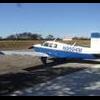I noticed that Jetdriven mentioned that he had his timing changed from 20 deg. BTDC to 25 deg. with better performance noted, especially LOP. The below info from the type certificate for the I0-360 A1A ends with the note that 25 deg. is spec, with 20 deg optional. Pretty weird, huh? So, how is your timing set, why, and what effect do you see? Anyone else changed timing and has before and after?
1E10 Page 2 of 18
Model (cont'd) IO-360-A1A, -A1B, -A1B6, -A1B6D, -A1C,
-A1D, -A1D6, -A1D6D, -A2A,
-A2B, -A2C, -A3B6,-A3B6D,
-A3D6D, -C1A, -C1B, -C1C, -C1C6,
-C1D6, -C1E6, -C1E6D, -C1F,
-C1G6, -D1A, -J1AD, -J1A6D, -K2A
LIO-360-C1E6
AIO-360-A1A, -A2A, -A1B, -B1B
AEIO-360-A1A, -A1B, -A1B6, -A1C, -A1E,
-A1E6, -A1D, -A2A, -A2B, -A2C
IO-360-B1A, -B1B, -B1D, -B1E,
-B1F, -B1F6, -B2E, -B2F,
-B2F6, -B1G6, -B4A, -E1A, -F1A,
-M1A+
AEIO-360-B1B, -B1D, -B1F,
-B2F, -B4A, -B1F6, -B2F6,
-B1G6,
Oil, Lubrication
(Lubricants should conform to the
specification as listed or to
subsequent revisions thereto) Lycoming Spec. No. 301 and Service
Instruction 1014 - -
Temperature NOTE 1 - -
Pressure NOTE 2 - -
Sump capacity, qt. 8 - -
(Except AIO series) AIO series - Dry Sump ?
Usable oil qt, (Except AEIO series) 6 - -
Engine Position NOTE 14 - -
Usable oil qt., (AEIO series) 4 - -
Ignition, dual
Magnetos NOTE 7 - -
Timing °BTC 25* 25
Spark plugs NOTE 4 - -
Bore and stroke, in. 5.125 x 4.375 - -
Displacement, cu. in. 361 - -
Compression Ratio 8.7:1 8.5:1
Turbocharger NOTE 9 - -
Weight (dry) lb. NOTE 7 - -
C.G. Location (dry with starter
and generator installed) NOTE 7 - -
Propeller shaft, SAE No. AS-127 Flange, Type 2 Modified - -
Crankshaft Dampers and Balancers NOTE 12 - -
NOTES 1,2,3,4,5,7,8,9,10,11,12,16 1,2,3,4,5,7,10,11,12,16
"- -" indicates "same as preceding models"
"?" indicates "does not apply"
+ IO-360-M1A has an alternate rating of 160 BHP at 2400RPM
* All models except IO-360-A1B6D and -A3B6D have optional timing of 20°BTC





